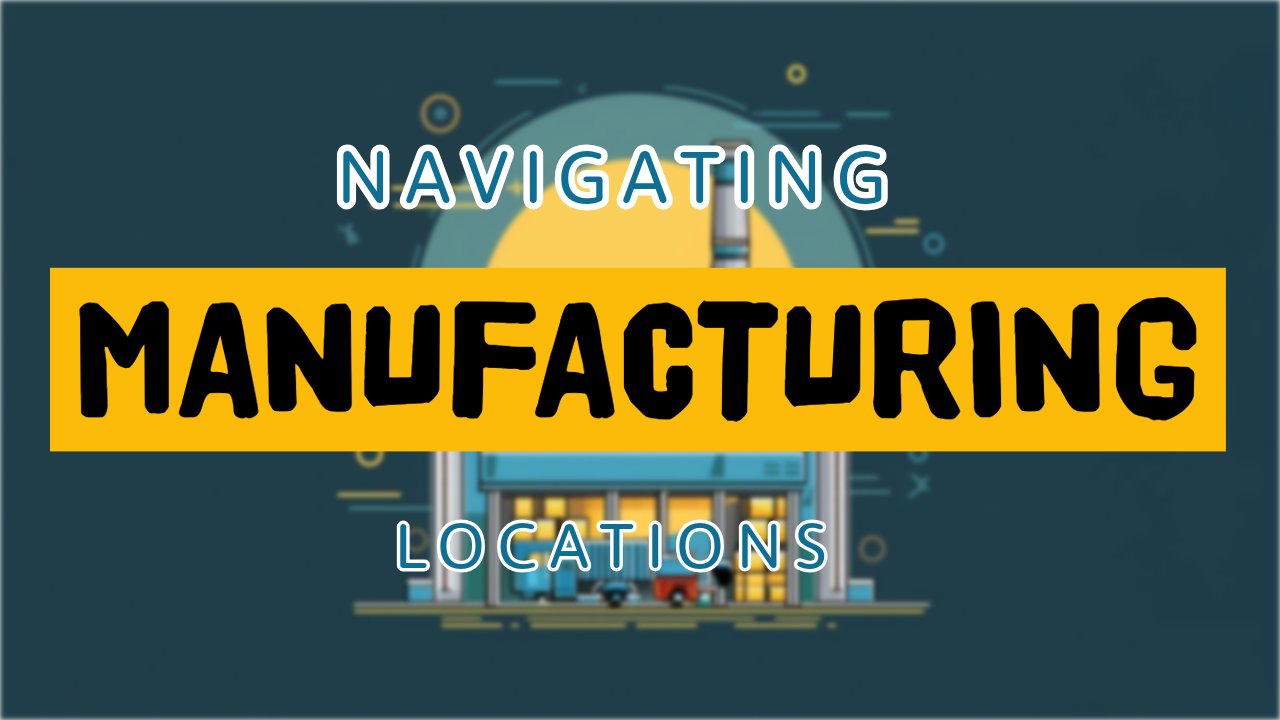In the ever-evolving landscape of global manufacturing, choosing the right location to set up production can significantly impact a company’s operational efficiency and bottom line. With the rise of China manufacturing and the growing appeal of manufacturing in Malaysia, industry leaders are often faced with a complex decision. Each location offers unique advantages and challenges, from cost considerations and labor availability to supply chain management and market access.
We delve into the intricacies of manufacturing in both locations, and explore the strategic benefits and potential drawbacks of each region, empowering industry leaders to forge ahead with confidence and ambition.
Evaluating Manufacturing in China
Pros of Manufacturing in China
Manufacturing in China offers several compelling advantages for businesses. Firstly, China’s vast labor force provides an extensive pool of skilled and semi-skilled workers, enabling companies to scale production efficiently. This workforce is often available at a competitive cost, which can significantly reduce overall manufacturing expenses. Additionally, China boasts a well-established industrial infrastructure, with advanced logistics networks that facilitate smooth supply chain management.
The country’s mature ecosystem of suppliers and manufacturers allows for seamless procurement of components, thus supporting diverse manufacturing needs. China’s access to raw material, skilled manufacturers and supply-chain and capabilities in making products efficiently and productively makes it one of the best places for manufacturing.
Furthermore, China has a robust domestic market, providing businesses with immediate access to a large pool of potential consumers. This can be particularly advantageous for companies looking to test products locally before expanding globally.
Finally, many special economic zones offer attractive incentives such as tax breaks and subsidies, which further enhance the cost-effectiveness of manufacturing in China.
Cons of Manufacturing in China
Despite its advantages, manufacturing in China presents several challenges. Intellectual property protection remains a significant concern, with companies often facing risks of counterfeiting and unauthorized replication of products. Additionally, rising labor costs in urban regions have begun to erode the traditional cost advantages, prompting businesses to seek alternative locations. Environmental regulations are extremely stringent, potentially increasing compliance costs for manufacturers.
Moreover, China manufacturing faces geopolitical tensions and trade disputes that can lead to unpredictable tariffs and barriers, affecting international trade dynamics. Language barriers and cultural differences may also complicate communication and negotiation processes with local partners and suppliers.
These factors necessitate careful consideration and strategic planning for firms looking to establish manufacturing operations in China, ensuring that potential risks are managed effectively.

Assessing Manufacturing in Malaysia
Pros of Manufacturing in Malaysia
Manufacturing in Malaysia offers several strategic benefits for companies. One of the most notable advantages is its stable economic and political environment, which provides a reliable backdrop for business operations. Malaysia has always been a trading nation with a large portion of its GDP coming from the manufacturing sector.
Malaysia’s labor force is both skilled and multilingual, easing communication and enhancing workforce efficiency. Competitive labor costs, compared to some other Asian countries, further improve the cost-effectiveness of manufacturing operations. The country also boasts well-developed infrastructure, including modern ports, roads, and telecommunications, which supports efficient supply chain management.
Additionally, Malaysia’s strategic location in Southeast Asia provides easy access to major international shipping routes, facilitating global trade. Its strong trade relationships and membership in various international trade agreements, such as the ASEAN Free Trade Area, enhance market access and reduce trade barriers.
Cons of Manufacturing in Malaysia
While Malaysia presents numerous advantages for manufacturers, some challenges should be considered. One primary concern is the relatively smaller domestic market compared to regional giants like China, which could limit immediate local sales opportunities. Additionally, while labor costs are competitive, they are rising, potentially affecting long-term cost advantages.
Competition within the region, particularly from countries like Vietnam and Thailand, means that Malaysia must continuously adapt to maintain its attractiveness as a manufacturing hub. For companies considering China manufacturing, these factors necessitate thorough due diligence to ensure alignment with their strategic objectives.
Strategic Supply Chain Management
Factors in Manufacturing Location Comparison
When evaluating manufacturing locations, several critical factors influence strategic supply chain management decisions. Labor cost and availability are pivotal, as they directly impact operational expenses and scalability. Infrastructure quality, including transportation networks and communication systems, affects logistics efficiency and overall supply chain reliability. Proximity to key markets is another essential consideration, as it determines market access and distribution costs.
Intellectual property protection is vital, particularly for companies producing innovative products. Additionally, geopolitical stability and trade relationships can significantly influence the risk profile of a location. Environmental regulations and sustainability practices are increasingly important, aligning with global trends towards greener, sustainable manufacturing. Evaluating these factors in a comprehensive manufacturing location comparison allows businesses to optimize their supply chain strategy, ensuring it aligns with their long-term goals and market demands in places like Malaysia and in China manufacturing.
Decision-Making for Industry Leaders
For industry leaders, making informed decisions about manufacturing locations necessitates a strategic approach that balances multiple factors. Cost-benefit analysis plays a crucial role, weighing the potential financial savings against inherent risks and challenges. Leaders must consider both short-term and long-term implications, ensuring that the chosen location aligns with the company’s strategic objectives and growth plans. Collaboration with local experts and stakeholders can provide valuable insights into regional nuances, enhancing decision-making accuracy.
Leaders should prioritize flexibility and adaptability, preparing contingency plans to manage unexpected changes in the geopolitical or economic landscape in places such as China manufacturing. Engaging in continuous review and reassessment of the manufacturing location strategy ensures it remains aligned with evolving business needs and market conditions. Ultimately, a well-thought-out decision-making process empowers industry leaders to optimize their supply chain and sustain competitive advantage.
Want to know more about manufacturing in Malaysia? Contact us to know more or connect with Louis to have a chat!
